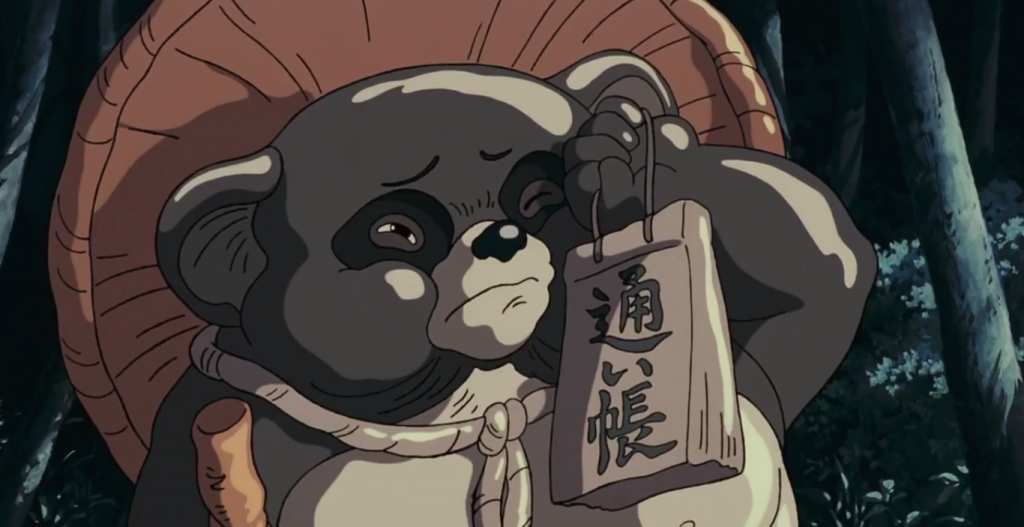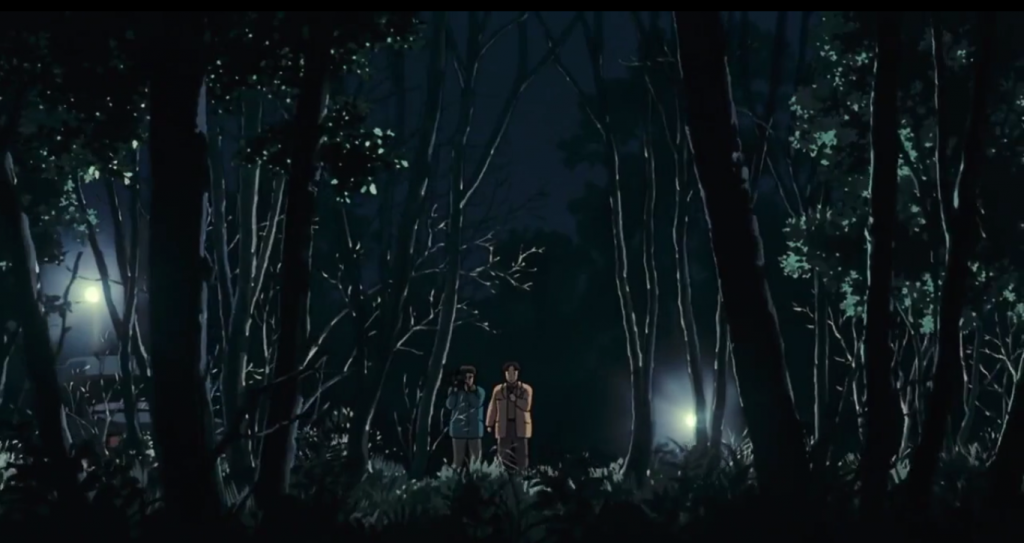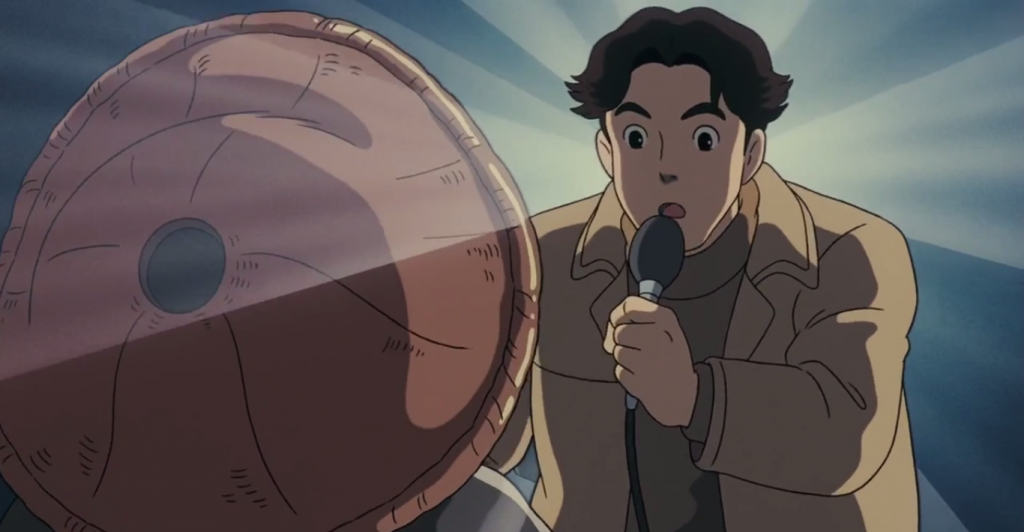
Pom Poko[1] is a film that follows the tanuki of Tama Hills trying to halt development of their woodland through their folkloric transformation powers. In terms of how it shows the animal; the film establishes the idea that animal-human relationships are characterised by a conflict of two worlds that are equally alien to each other.
A particularly striking scene later in the film helps grant a greater insight into how Pom Poko depicts this kind of animal-human relationship. In this scene two elder tanuki, Osho and Oroku, give an interview to a television crew. One of the major ways the film establishes a sense of this divide is through lighting. The main light source of the scene comes from floodlights, which makes both the lighting and colouration of the scene far more polarised in comparison to the rest of the film, giving a direr tone. The light of the floodlights creates a distinctly starker colour composition. Sweeping shots taken from within the bushes of the scene show a distinct contrast between the harsh, washed out colours created by the humans’ floodlights and the deep shadows the tanuki hide in. This use of light and colour creates a distinct sense of separation of space; that despite the humans and tanuki existing within the same place there is still this ever-present divide.

It is the physical divide established in this scene that helps us understand the film’s interpretations of animal-human relationships. Firstly it demonstrated the idea of how diametrically opposed the animal and the human worlds are; but also how these alien worlds interact. The floodlights are harsh, and invasive of the forest around them. Given that the light is aligned with the humans in the composition of the scene, this gives us a sense of the humans’ encroachment on the animal; just as the man-made light encroaches on the natural shadows in the lighting composition of the scene.
The scene also grants us understanding into how the human and animal view each other in the film. When approaching the humans, the form Osho takes is that of a traditional tanuki icon. This presents the idea that the humans see the tanuki, and therefore the animal world, as embodied by traditionalism and folklore. On the flipside, when Osho attempts to talk to the humans, the scene presents us with a point of view shot from Osho’s perspective where the human reporter is shown wreathed in the harsh light of the floodlights. Presenting a mockery of divine radiance, this is a clear visual demonstration of a point made by the tanuki throughout the film; that they view the humans in a similar mythic vein as the humans view them. These distinctions further enforce how little each world understands the other; as Oroku’s interruption shows the tanuki to not be as their traditional interpretations and the humans to be more craven than divine. In this, we understand how the film interprets both the nature of human-animal relations and how each views the other; that of humans’ encroachment on the animal and of the great misunderstanding fuelled division between the two.

Filmography
- Pom Poko. Dir. Isao Takahata. Toho, 1994.